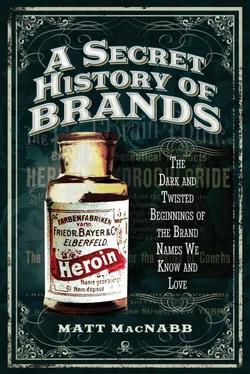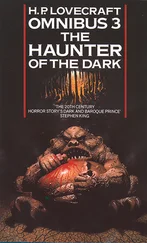It should be generally known, and especially in German scientific circles, that the SS did not have notable scientists at its disposal. It is clear that the experiments in the concentration camps with IG preparations only took place in the interests of the IG, which strived by all means to determine the effectiveness of these preparations. They let the SS deal with the – shall I say – dirty work in the concentration camps. It was not the IG’s intention to bring any of this out in the open, but rather to put up a smoke screen around the experiments so that (…) they could keep any profits to themselves. Not the SS but the IG took the initiative for the concentration camp experiments.
Bayer After the Second World War
The Allies broke up the IG Farben conglomerate in 1945. Unlike so many of the companies that were involved with the Nazi regime during the Second World War, IG Farben didn’t come away unaffected. Their direct involvement with the atrocities of war earned twenty-four members of the company a spot in the famed Nuremberg trials.
Although there were twenty-four intended defendants, one was excused from the trials due to a serious illness. The twenty-three members of IG Farben who actually stood trial for their war crimes inluded Carl Krauch (Chairman of the Supervisory Board), Hermann Schmitz (Chairman of the Managing Board), Georg von Schnitzler (Military Economy Leader), Fritz Gajewski (Director of AGFA), Heinrich Horein (Head of chemical research), August von Knieriem (Chief Counsel and Head of the legal department), Fritz ter Meer (Head of Department II), Christian Schneider (Head of Department I), Otto Ambros (Buna plant production chief), Paul Hafliger (Head of the metals dept.), Ernst Burgin (Plant leader), Carl Lautenschlager (Plant leader), Max Ilgner (Head of intelligence and propaganda), Heinrich Butefisch (Production chief at Auschwitz), Friedrich Jahne (Chief engineer), Hans Kugler (Head of sales for dyestuffs), Heinrich Gattinau (Intelligence and plant police), Carl Wurster (Plant leader), Hans Kuhne (Plant leader), Wilhelm Rudolf Mann (Pharmaceuticals), Heinrich Oster (Manager of the Nitrogen Syndicate), Walter Durrfeld (Head of construction at Auschwitz and Monowitz) and Erich von der Heyde (Deputy of intelligence and plant police). A good number of the men on trial were also members of the Nazi SS and SA at various levels.
The trial began on 27 August 1947 and ran for nearly a year, until 11 June 1948. The IG Farben Trial was the third longest trial held at Nuremberg, behind the IMT trial and the Ministries Case. The judges who served as part of the Military Tribunal VI and oversaw the trial included Clarence F. Merril, Paul M. Herbert, James Morris and Curtis Grover Shake.
On the first day of the trial the prosecuting attorney’s opening statement addressed the kind of charges that were being levied against the twenty-four men. The following is quoted directly from the transcript of that opening statement:
The grave charges in this case have not been laid before the Tribunal casually or unreflectingly. The indictment accuses these men of major responsibility for visiting upon mankind the most soaring and catastrophic war in modern history. It accuses them of wholesale enslavement, plunder and murder. These are terrible charges… The crimes with which these man are charged were not committed in rage, or under the stress of sudden temptation; they were not the slips or lapses of otherwise well-ordered men. One does not build a stupendous war machine in a fit of passion, nor an Auschwitz factory during a passing spasm of brutality. What these men did was done with the utmost deliberation and would, I venture to surmise, be repeated if the opportunity should recur. There will be no mistaking the ruthless purposefulness with which the defendants embarked upon their course of conduct.
The heaviest sentences were carried out for Otto Ambros and Walter Durrfeld, both of whom were directly related to the construction and running of the Auschwitz factory. They each received eight years’ imprisonment. Fritz ter Meer would receive a seven-year sentence for his involvement in the chemical plant in Buna. Carl Krauch and Heinrich Butefisch both got six years and it went down from there. Ten of the men were actually acquitted of all charges and all of the men who were sentenced were given the luxury of time served as part of their sentencing.
The only apology from Bayer for their involvement with the Auschwitz death camps would come in 1995 to Nobel Prize winning author and holocaust survivor, Elie Wiesel. Elie had lost his mother and sister in the camps, but he himself was able to go on. He wrote a powerful firs-thand account in his book titled simply Night , which has become required reading in many schools around the world. Elie had been scheduled in late 1995 to give a speech for the Three Rivers Lecture Series in Pittsburgh, Pennsylvania. He soon discovered that Bayer was one of the corporate sponsors of the event, and having full and intimate first-hand knowledge of what IG Farben had done to his family and so many others, he promptly cancelled the appearance. When the then president and CEO of Bayer, Helge H. Wehmeier, heard about the cancellation he personally paid a visit to Wiesel at his home. Wiesel recalled the visit to the Pittsburgh Post-Gazette , ‘I was very moved by the man. I explained to him the situation. And I said to him: “Look, Bayer never apologized”. I said it straight out. ‘And he said, “What if I apologize?” Right then, I knew he would do it, and do it well’.
Apologise he did; Wehmeier included an apology as a foreword to Elie’s speech, which included remarks about his ‘shock and shame’ at what his company had done in conjunction with the Nazis. He went on to express that he felt ‘the obligation, but also the opportunity, to shape a different future, a better understanding and a better world’. Wiesel, for what it’s worth, found no blame with Wehmeier himself and said so during his speech, ‘It’s not your fault that IG Farben was guilty.’ Wehmeier himself wasn’t even born until 1943. The apology was certainly a step in the right direction, but unfortunately time would tell that the feelings of regret were more Wehmeier’s than those of Bayer AG.
It would be natural to assume that Bayer would want to continue to distance themselves from the IG Farben days as much as possible after the fallout from the Second World War, even after Helge Wehmeier retired in 2004. Unfortunately, just two years later, Bayer would be back to endorsing the dark side of their history. In 1956, Second World War criminal Fritz ter Meer had been appointed the chairman of the supervisory board of Bayer. Fritz had been the head officer directing the operations of IG Farben Auschwitz and was sentenced to seven years for his part in the horrors; a sentence of which he would serve only four years. Fritz held the position at Bayer for seven years – three years longer than he spent in prison for his war crimes. Bayer AG seemed to reinforce this piece of their dark history in 2006 when, despite Wehmeier’s earlier apology, they sponsored a large memorial wreath on the grave of ter Meer.
Bayer Today and Modern Controversy
Bayer has a history steeped in controversy and horror, and the company seems unable to stay away from the negative spotlight even today. The CBG Network or Coordination gegen Bayer-Gefahren (translation: Coalition against Bayer-Dangers) was established as a watchdog group that minds the activities of Bayer. The company has continued to be rife with controversy around the world.
In 2006, the CBG Network found that Bayer’s claims of significant greenhouse-gas emission reductions were unfounded, blatantly false, and spun with disinformation. They also noted in 2011 that Bayer CropScience was finally ceasing production of their most deadly pesticides. Philipp Mimkes from the Coalition against BAYER Dangers comments:
Читать дальше












